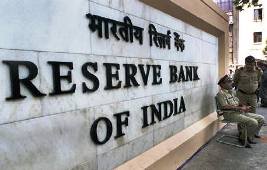 Reserve Bank Governor D Subbarao on Tuesday proposed a producers price index saying that the present structure of measuring inflation does not capture the price movement of services and is a hybrid of rate quotes.
Reserve Bank Governor D Subbarao on Tuesday proposed a producers price index saying that the present structure of measuring inflation does not capture the price movement of services and is a hybrid of rate quotes.
The Producer Price Index will be better able to measure the average change over time in the sale prices of domestic goods and services, he said.
"In its present structure, the Wholesale Price Index does not capture the price movement of services. Also, it is a hybrid of consumer and producer price quotes," he said at the Sixth Annual Statistics Day Conference here.
Sellers' and purchasers' prices differ because of government subsidies, sales and excise taxes, and distribution costs, Subbarao said.
"For these reasons, it is, therefore, desirable that we move towards developing a Producer Price Index that measures the average change over time in the sale prices of domestic goods and services," he added.
The RBI Governor further said that core inflation gives a better picture of price trend as it is less volatile WPI-based inflation.
Core inflation is usually estimated by excluding food and energy prices from the basket of goods and services that represents a household's spending.
"The rationale for exclusion is that the prices of food and energy tend to fluctuate
"The surmise is that core inflation, being less volatile, gives a better sense of future price trends," Subbarao said.
"If one takes a longer series of over three years, there is some evidence that core inflation does have statistically significant predictive power," he added.
Presently, there are several measures of inflation, including WPI.
Besides, there used to be four consumer price indices (CPIs)- CPI UNME (Urban Non-Manual Employee), CPI AL (Agricultural Labourer), CPI RL (Rural Labourer) and CPI IW (Industrial Worker).
However, in the last year the government introduced a new CPI series which has CPI (Rural), CPI (Urban) and CPI (Combined), representing the entire country.
Speaking about economic growth, Subbarao said, the Reserve Bank in its annual report for 2009-10, had said that the potential output of the Indian economy may have dropped
from 8.5 per cent pre-crisis to 8.0 per cent post-crisis.
"Latest assessment following the standard filtering technique suggests that potential output growth may have further fallen to around 7.5 per cent," he said.
"Assessing India's potential growth rate, consistent with our objective of low and stable inflation, remains a challenge," he added.










